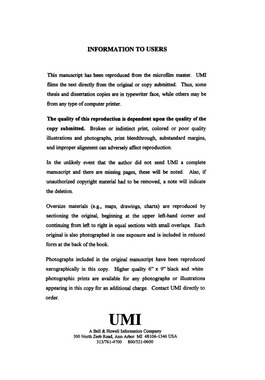| dc.contributor.author | Hannon, Carole J. | en_US |
| dc.date.accessioned | 2013-08-16T12:29:35Z | |
| dc.date.available | 2013-08-16T12:29:35Z | |
| dc.date.issued | 1997 | en_US |
| dc.identifier.uri | https://hdl.handle.net/11244/5461 | |
| dc.description.abstract | Walt Disney Productions is considered by conventional wisdom to be synonymous with wholesome family entertainment in the global marketplace. Parents and well meaning adults may use what they consider to be Disney's wholesome entertainment as a harmless baby sitter. This means very young children are bombarded with images and ideas that may influence their entire lives by a multinational conglomerate that has something to sell. This research utilizes a triangulation of methods to include critical, historical, content, and comparative analyses to systematically test the conventional assumptions concerning age and gender depiction in seven recent Disney videos based on anecdotal and fragmentary evidence that Disney products are mainly wholesome family entertainment, safely enjoyable by children of all ages. The study is significant because research on full-length animated films developed for the child's audience is almost nonexistent. The major findings of the content analysis are: (a) males appear in major roles more than twice as often as females; (b) major males are depicted as older (mostly in the 18-24 age category) than the major females (mostly in the 12-17 age category); (c) no birth mother is depicted for a major female character and only one birth mother is represented in the seven Disney videos (the mother of Simba, the lion prince), and she is cast in a non-speaking role; (d) males are most often perpetrators of violence (if young, to win the hand of the fair maiden; if older, for wealth or greed) with the exception of older females who are depicted as evil; and (e) major females in Disney are all romantically involved. The major results of the comparative analysis which includes both textual and contextual comparisons of Disney versus a "popular" fairy tale script posit that: (1) Disney alters ages and actions of major and minor characters to fit the "formula", (2) Disney creates "sidekick" animals to bear the brunt of violence and abuse and to dehumanize the consequences of dire actions, (3) Disney deletes most all women from the original fairy tale texts with the exception of the protagonist (good and young) and the antagonist (old and evil), and (4) these alterations are made for both ideological and commercial reasons to sell the Disney product (videos, dolls, games, etc.) to anyone who will buy. Global marketing and conglomerate control of media entertainment is, therefore, creating a pervasive "invisible crisis" in the world. A new, active, citizens' approach is suggested and recommended in the form of the Cultural Environment Movement (CEM). CEM's goal is to dissolve international boundaries and to build a coalition of citizens and organizations committed to joint action for the creation of a liberating alternative to free the cultural environment from the current proliferation of conglomerate control. The Disney conglomerate will alter their texts for profitability but have no incentive to alter the "megabillion" formula that works so well for them until informed parents and caring citizens shift their attention to creating action-based alternatives to the very real crisis within our media-dominated cultural environment. | en_US |
| dc.format.extent | xvi, 374 leaves ; | en_US |
| dc.subject | Characters and characteristics in motion pictures. | en_US |
| dc.subject | Mass Communications. | en_US |
| dc.subject | Children's films Social aspects. | en_US |
| dc.subject | Older people in mass media | en_US |
| dc.subject | Animated films Social aspects United States. | en_US |
| dc.subject | Speech Communication. | en_US |
| dc.subject | Walt Disney Company. | en_US |
| dc.subject | Folklore. | en_US |
| dc.subject | Sex role in motion pictures. | en_US |
| dc.title | Aging with Disney: Depiction of gender and age in seven Disney animated fairy tales. | en_US |
| dc.type | Thesis | en_US |
| dc.thesis.degree | Ph.D. | en_US |
| dc.thesis.degreeDiscipline | Department of Communication | en_US |
| dc.note | Source: Dissertation Abstracts International, Volume: 58-02, Section: A, page: 0331. | en_US |
| ou.identifier | (UMI)AAI9722749 | en_US |
| ou.group | College of Arts and Sciences::Department of Communication | |
